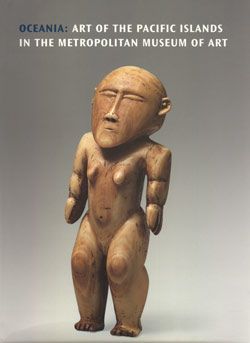Sago Bowl (Kamana)
Not on view
The Sawos and neighboring groups in the Middle Sepik region in northeast New Guinea have a highly developed ceramic tradition that remains active today. The most ornate Sawos vessels are kamana, incised and painted conical bowls used to serve sago, a staple food prepared from the starchy core of the sago palm. Some examples are made for local use. However, large numbers are produced for trade with the neighboring Iatmul people. The bowls are made by women and decorated by men. Although their imagery can include supernatural subjects, kamana serve as ordinary food bowls. When in use, they are placed in a ring of plaited cane to hold the bowl upright. At other times, they are inverted to allow the designs to be seen. The patterns usually consist of geometric motifs interspersed with faces identified as those of spirits. Figural compositions are rare. This kamana portrays a man and
woman (only the woman is visible here), possibly primordial ancestors, in sexual union and surrounded by stylized birds, which probably represent totemic species.
Due to rights restrictions, this image cannot be enlarged, viewed at full screen, or downloaded.
This artwork is meant to be viewed from right to left. Scroll left to view more.









